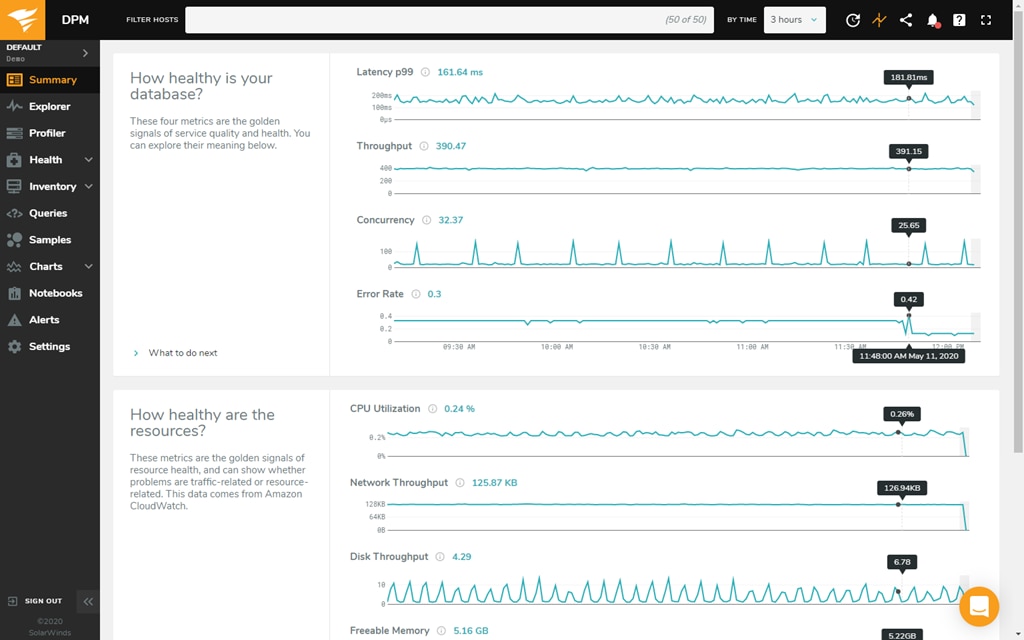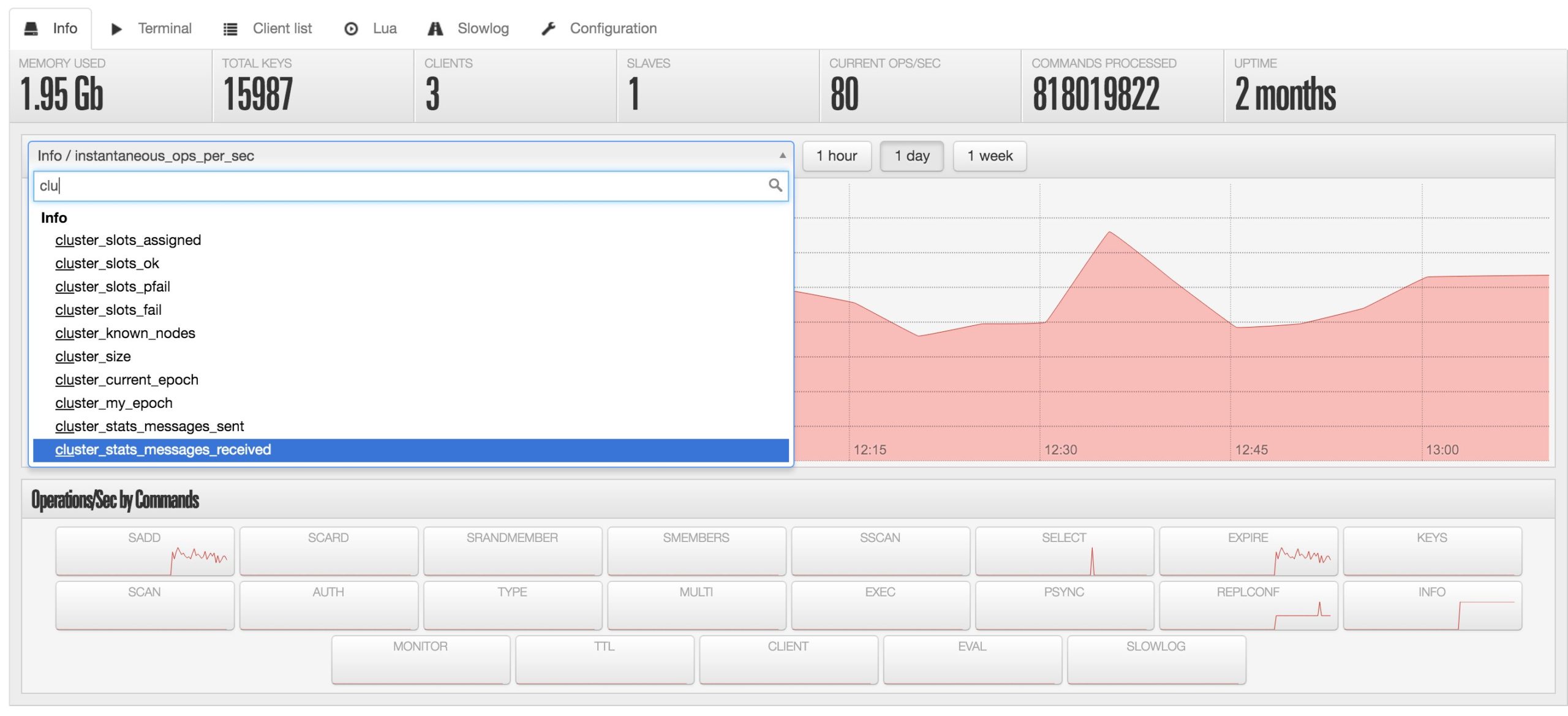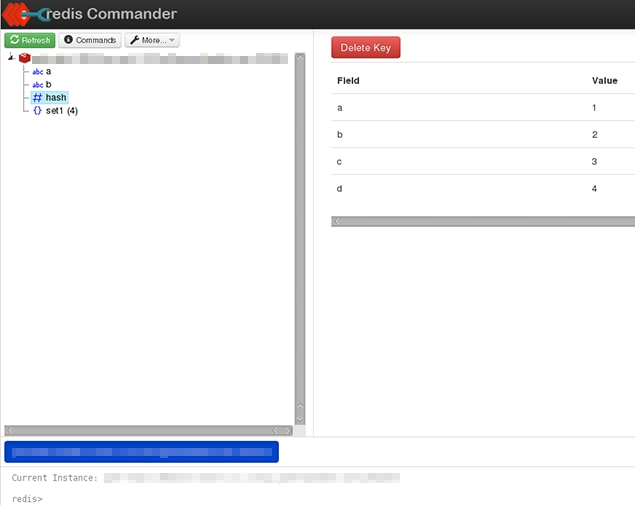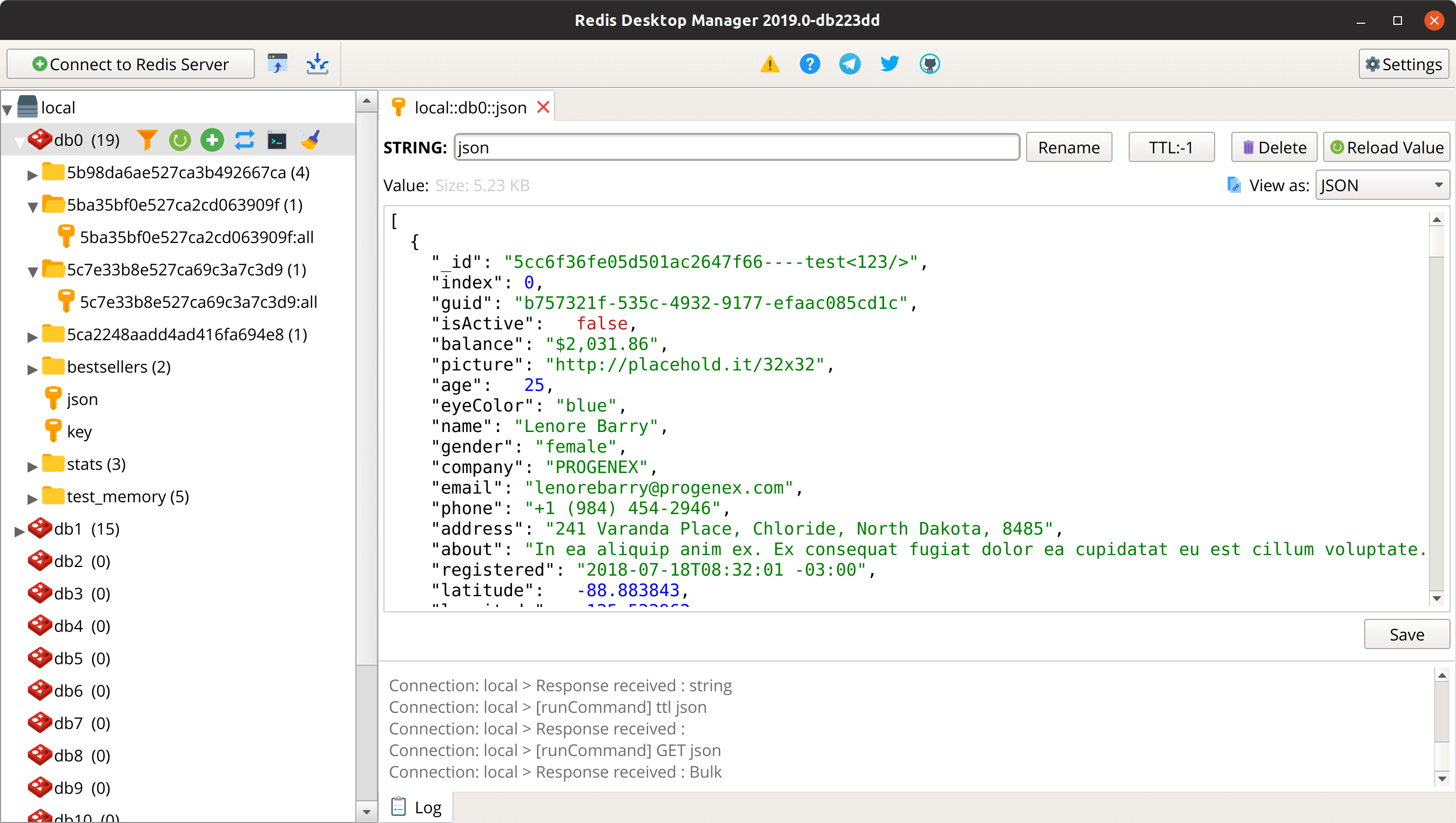This guide will help you understand the basics of Redis and Redis cluster management, in addition to providing a list of the best Redis management tools. For those who don’t have time to read the full list, I believe SolarWinds® Database Performance Monitor (DPM) tops the ranks as the most efficient, user-friendly, and sophisticated Redis manager available on the market. A 14-day free trial is available for download.
What Is Redis?
Redis is an open-source, in-memory data structure store that’s multi-faceted and useful to developers in different ways. It can be used as a database, cache, and message broker. Redis supports several data structures, including hashes, sets, strings, lists, sorted sets with range queries, hyperloglogs, bitmaps, geospatial indexes with radius queries, and streams.
Redis includes built-in Lua scripting, replication, transactions, LRU eviction, and various levels of on-disk persistence. With Redis Sentinel, you can achieve high availability, while Redis Cluster delivers automatic partitioning.
To achieve a high level of performance, Redis works with an in-memory dataset. You can persist it, depending on your use case, either by appending each command to a log or by occasionally dumping the dataset to disk. You can disable persistence if all you require is a feature-rich, networked, in-memory cache.
Redis also supports trivial-to-setup, primary-replica, asynchronous replication, delivering rapid non-blocking first synchronization, and auto-reconnection with partial resynchronization on net split. Redis is written in ANSI C and supports most programming languages. It works in most POSIX systems without external dependencies—this includes Linux, OS X, and *BSD. Redis is tested and developed most in the OS X and Linux operating systems, which is why Redis recommends using Linux for deployment. There’s no official support for Windows builds, but Redis may work in Solaris-derived systems like SmartOS. In these cases, however, the support is on a “best effort” basis.
What Is a Redis Cluster?
Redis Cluster allows a Redis installation to be run where data is sharded automatically across numerous Redis nodes. Redis Cluster also affords some degree of availability during partitions. In practical terms, this provides the ability to continue the operations even when some nodes are unable to communicate or fail entirely. In the event of larger failures (i.e., when most primaries are unavailable), the cluster ceases to operate.
In simple terms, Redis Cluster is defined by two key characteristics—the ability to continue operations when a subset of the nodes are experiencing failures or can’t communicate with the rest of the cluster, and the ability to automatically split your dataset between numerous nodes.

Best Redis Manager Tools
To make the most of Redis powerful capabilities, you should implement a Redis manager or Redis Cluster manager. The right Redis manager can help you streamline your Redis database management and monitoring processes, increasing performance and boosting efficiency.
1. SolarWinds Database Performance Monitor (DPM)

SolarWinds DPM is a Redis database manager and monitoring tool designed to monitor every query and metric on your system, with down-to-the-second data collection for both historical and real-time analysis. This Redis manager delivers all the performance data required to pinpoint
Redis performance problems, measuring throughput for every query and executing in microsecond resolution. As a Software-as-a-Service (SaaS) platform with a web-based user interface, this solution doubles as a Redis web manager.
DPM is a Redis cluster manager with a Top Queries feature, which displays a master-detail view of all the servers in your application. This Redis manager is built to allow you to conduct per-second drill-down into samples of queries and cross-correlations with other key metrics, including CPU and I/O. With DPM, you can drill down from a global viewpoint to a single problem query on a single server, instantaneously. You can also thin-slice queries and compare them across time periods for before-and-after change analysis.
As a Redis database manager, DPM gives users detailed insight into Redis metrics, with the ability to measure a broad set of metrics across your entire system. In addition to monitoring every metric exposed by Redis, DPM is also built to monitor and classify multi-dimensional data on other system components. When a problem arises, even if it only lasts for a second, you’ll have access to the data you’ll need to troubleshoot and solve it rapidly.
As a cloud-based Redis web manager and SaaS solution, implementing DPM doesn’t require you to provision, purchase, or maintain any software or hardware. There’s no upfront cost and no CapEx or depreciation concerns. DPM is updated and upgraded continuously, giving you access to new capabilities automatically whenever they become available.
To save you time, DPM’s agent is built to automatically discover everything you need to get started, keeping the installation process as simple as possible. DPM’s agents are entirely passive, using network traffic capture, system view inspection, and other techniques to perform their role. Agents are safe, with data encryption both at-rest and in-flight, and no inbound network access required. The DPM agents are built to be efficient and resource constrained, consuming less than 1% CPU.
DPM’s big data analytics platform uses highly sophisticated techniques, such as regression analysis and queuing theory, to deliver deep insight. This allows for zero-configuration detection of micro-fine server stalls and helps give you visibility into the relationship between queries, CPU, and I/O.
A key benefit of using this tool as a Redis manager is DPM was designed for cross-functional teams. DPM enables application developers, DevOps, and database administrators to work together to solve problems via a collaborative tool. It supports integration with chat, deep-linking, quick sharing, and other features built to facilitate collaboration between different teams. You can use DPM in development and staging to identify problems before they’re released to production. With this powerful and intuitive tool, analyzing query and server behavior becomes significantly easier for development teams.
Overall, this Redis cluster manager delivers a comprehensive and advanced Redis database management and monitoring experience, all through a user-friendly and intuitive interface. You can access a 14-day free trial here.
2. Redsmin

Redsmin is a popular Redis management tool delivering a web-based service, offering a GUI for inspecting your Redis data and monitoring and runtime server reconfiguration capabilities. Redsmin lets you monitor your Redis instances with a high level of granularity, both in real time and historically.
This Redis cluster management tool allows you to manage your cloud-hosted Redis servers from a centralized location, via the Redsmin dashboards. This includes Microsoft Azure Redis cache, Redis Labs, Amazon AWS, Elasticache, and much more.
With Redsmin, you can deploy your Redis servers safely behind the firewall. The Redsmin proxy will open and maintain a secure connection to Redsmin, eliminating the need to open ports in your firewall.
As a hosted service, Redsmin allows you to connect to your Redis server directly over the internet, with the option of SSL authentication and encryption. Alternatively, you can connect using a proxy service you run on your servers that safely exposes Redis instances to the Redsmin platform.
Other useful Redsmin features include slowlog inspection, a multi-keys editor for batch operations, a browser API for testing your JavaScript against Redis directly from your browser console, and plenty more. Redsmin offers a free account, which allows you to monitor one Redis instance, and a 30-day free trial for each Redsmin edition.
3. Redis Commander

Redis Commander is a Node.js web application useful to view, edit, and manage your Redis databases, all from your web browser. This allows you to manage Redis from anywhere you have safe access to the internet. With Redis Commander, you can directly manipulate Redis data types.
Redis Commander is freely available and can be installed quickly and easily, provided you have a working Node.js installation. Like most Redis GUIs, this Redis manager lets you connect to numerous databases and Redis server instances at the same time. Redis Commander features an editor and a terminal with auto-complete functionality, which applies to both commands and keys. This tool also offers documentation and extensive import/export capabilities.
Although Redis Commander requires direct access to your servers, you can overcome this limitation by running Redis Commander directly in your Redis servers. This gives you the ability to access it remotely without having to expose your Redis server over the web. Although Redis Commander offers some useful features, it could be more user-friendly and intuitive. You can access Redis Commander here.
4. Redis Desktop Manager

Redis Desktop manager is a fast Redis database management application for Windows, Linux, MacOS, and iPadOS. This cross-platform desktop Redis client allows you to connect simultaneously to multiple Redis databases or instances and inspect and modify your data via an interactive terminal. You can also use this Redis manager to search for keys across multiple databases. Another useful feature of Redis Desktop Manager is the ability to view a system console logging Redis commands.
With Redis Desktop Manager, you can establish connections via SSH tunnels, enabling safe connections to remote servers. Although this feature distinguishes Redis Desktop Manager from many competitors, this tool comes with a significant learning curve. You can download Redis Desktop Manager here.
Getting Started With a Redis Management Tool
Effective Redis cluster management provides users with an opportunity to take full advantage of the Redis database’s powerful potential. With the right Redis management tool, you can improve performance and respond to Redis issues quickly and efficiently. SolarWinds DPM comes highly recommended as a user-friendly, intuitive, and advanced Redis cluster management tool offering an impressive range of features. A 14-day free trial is available.


